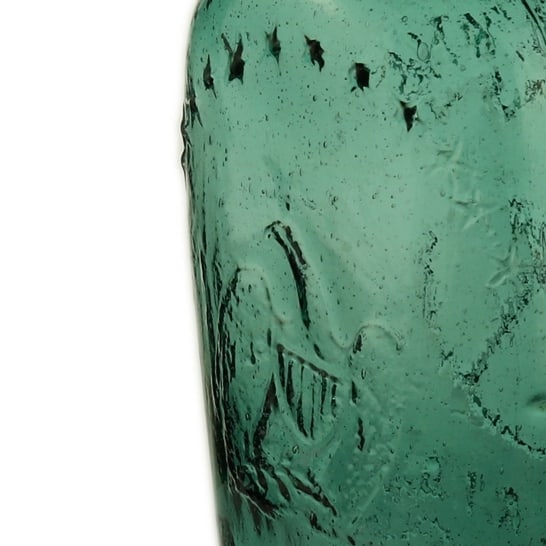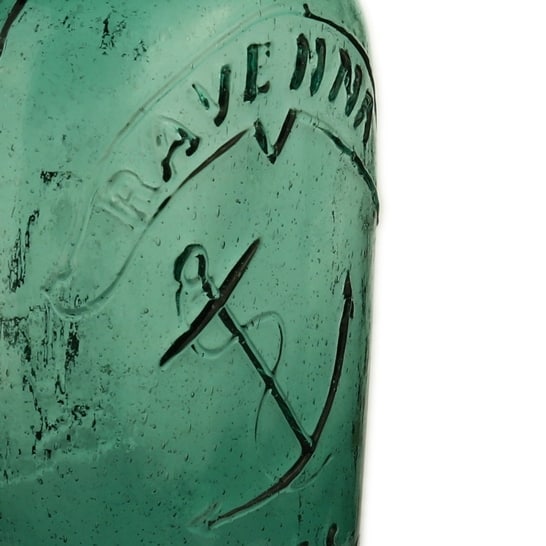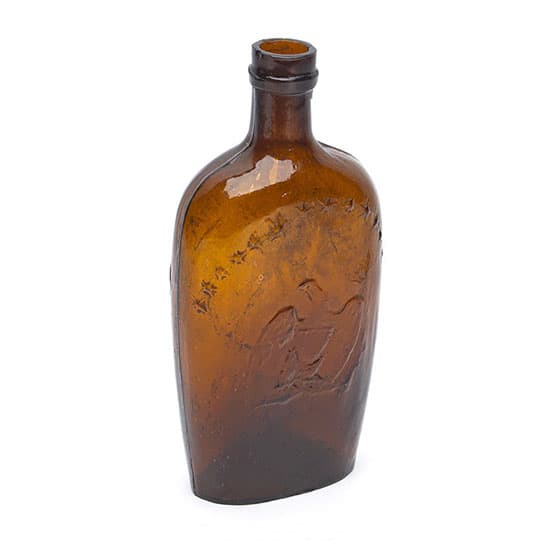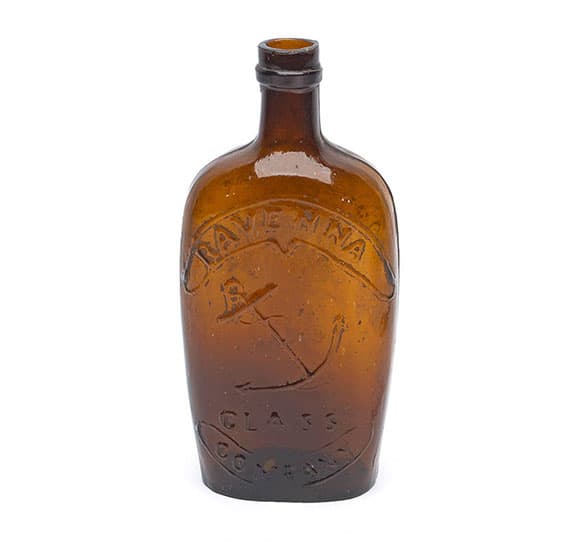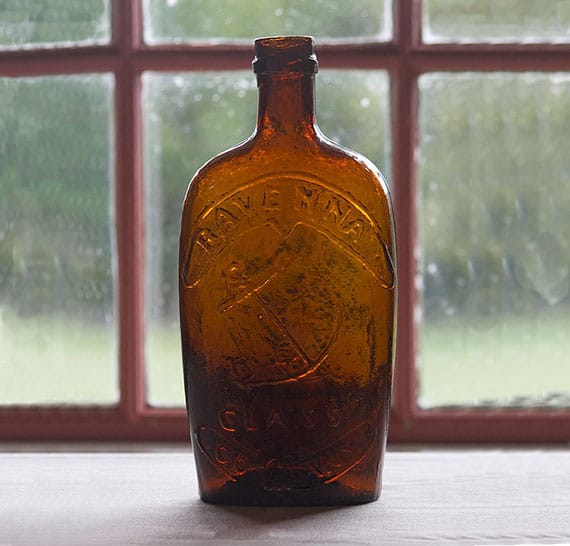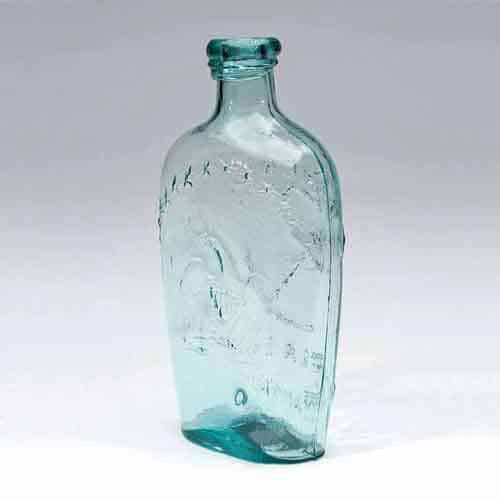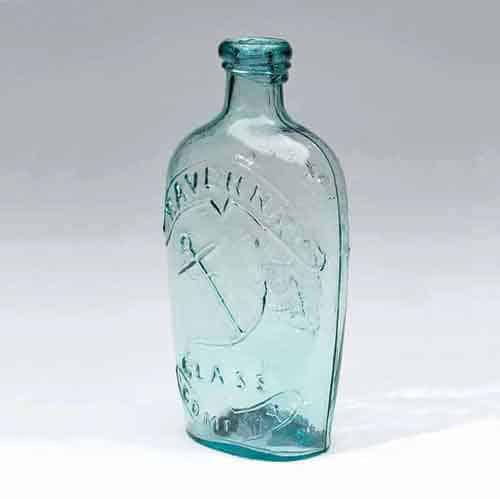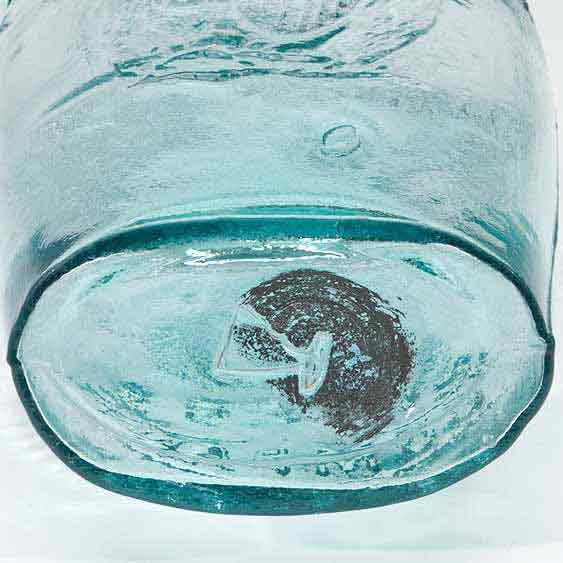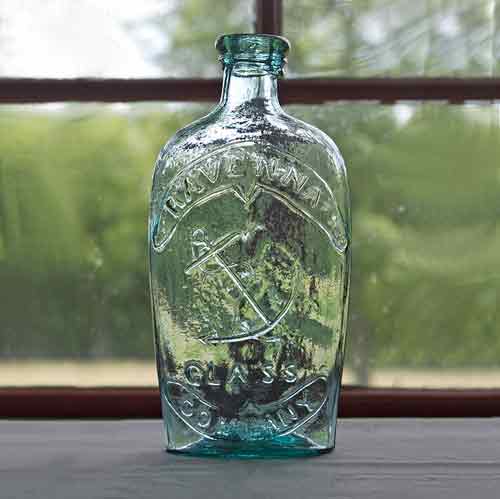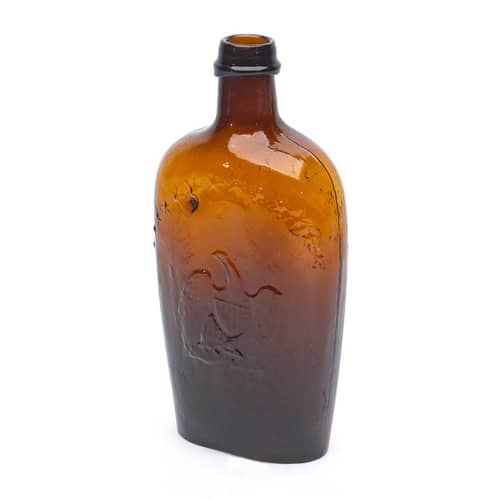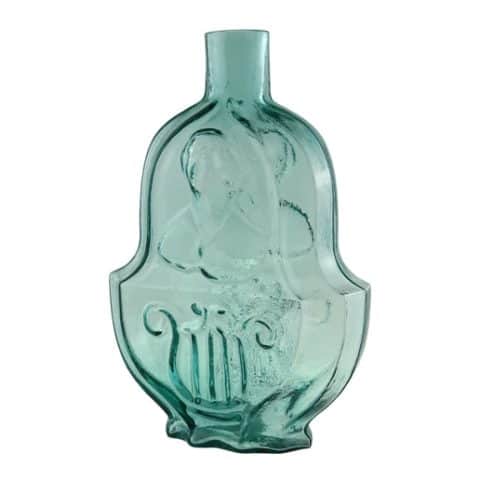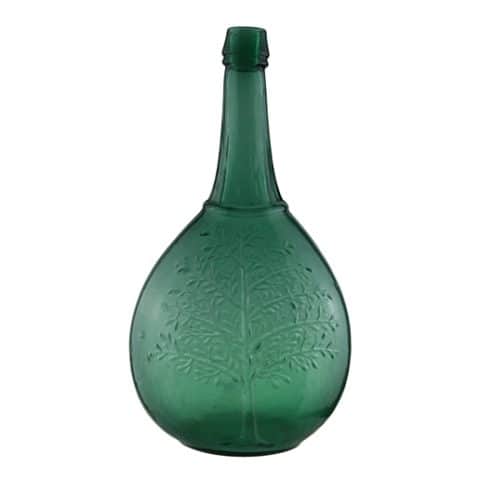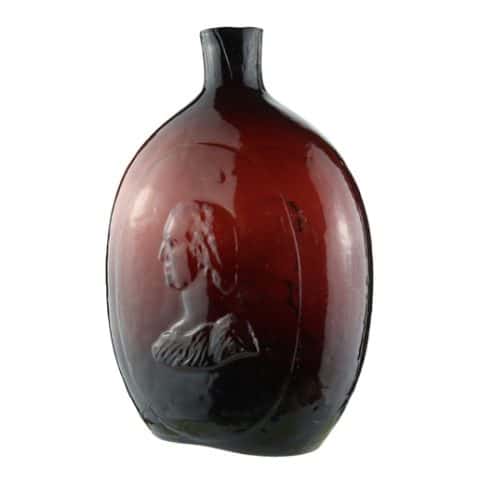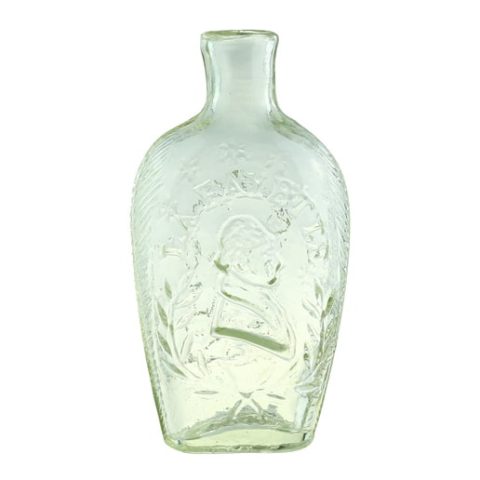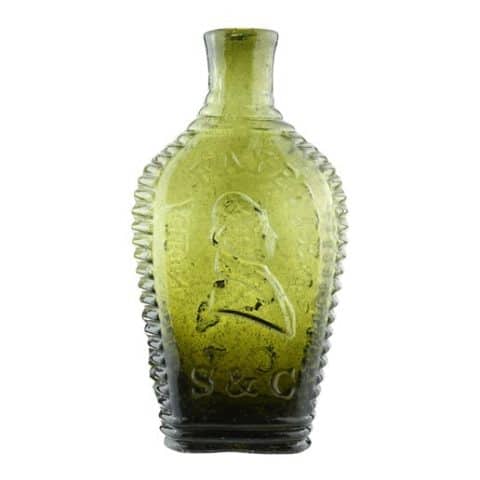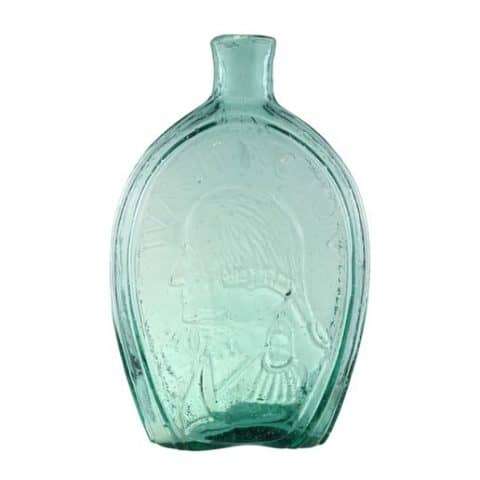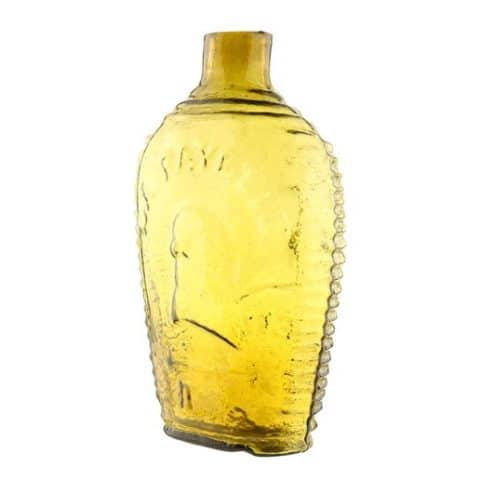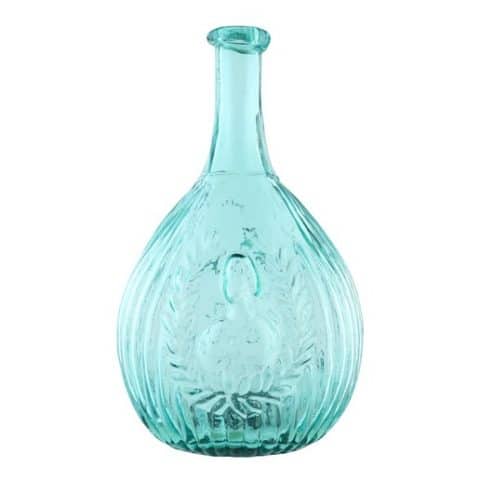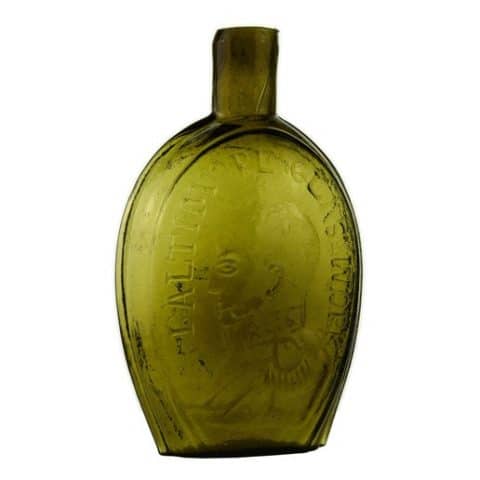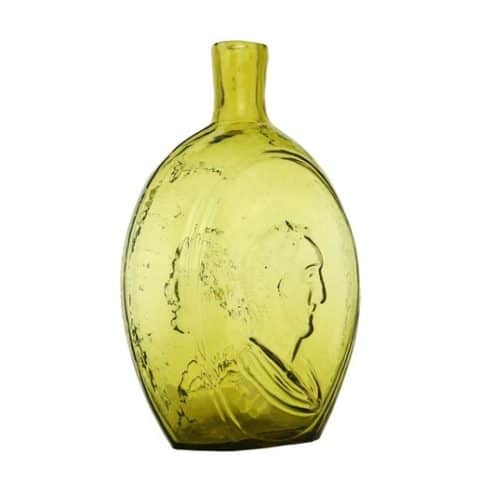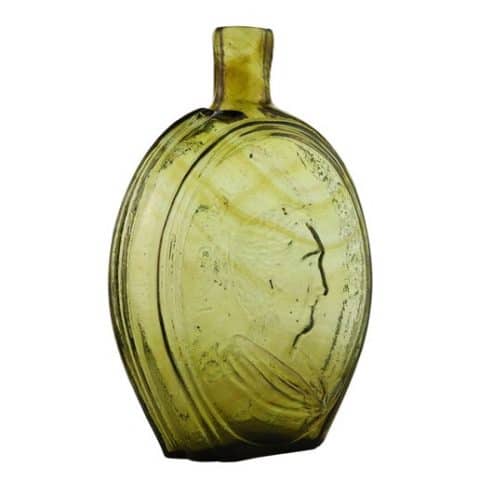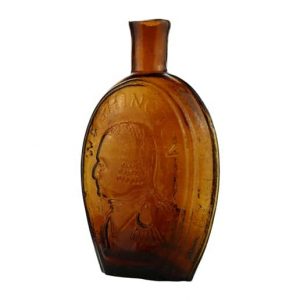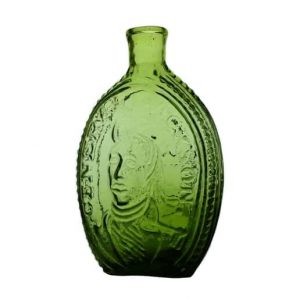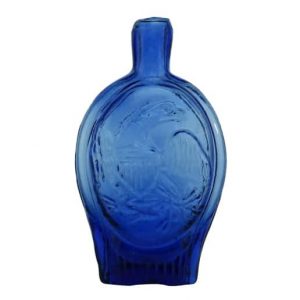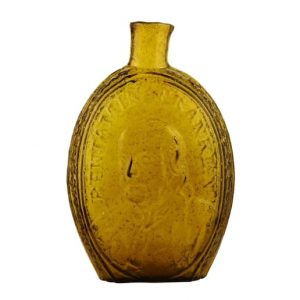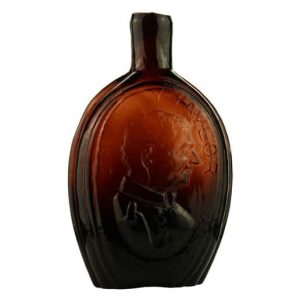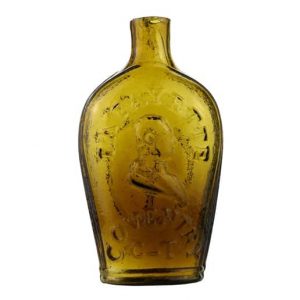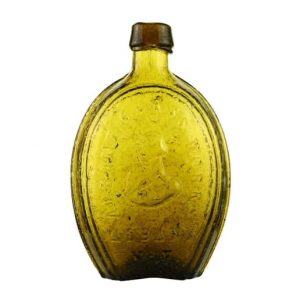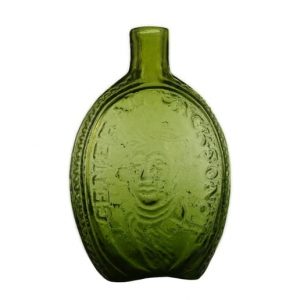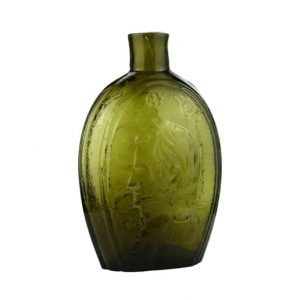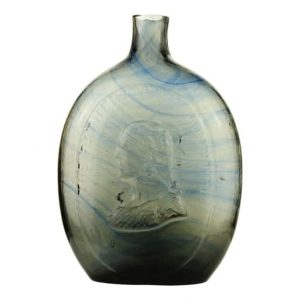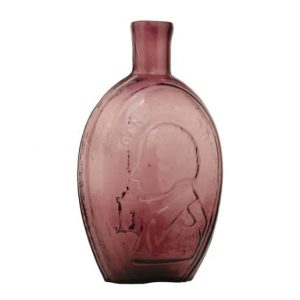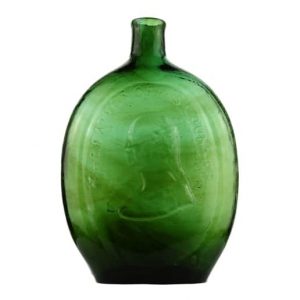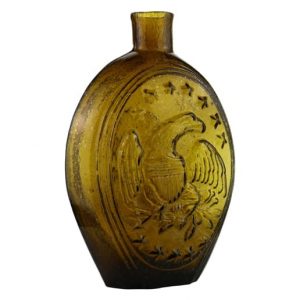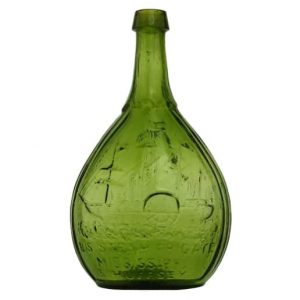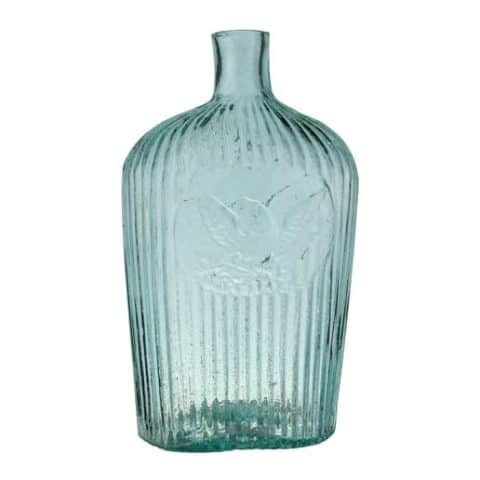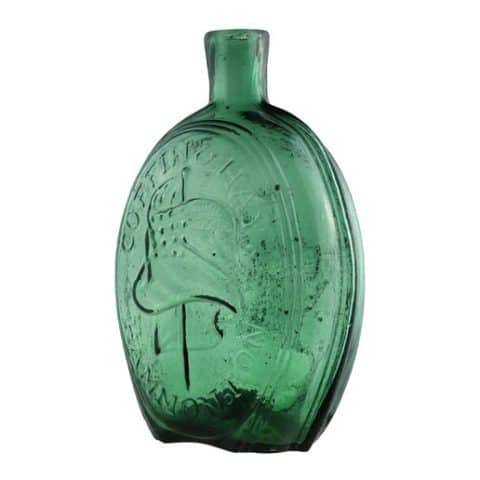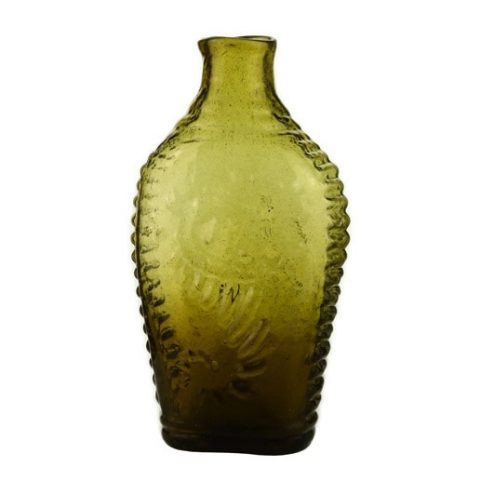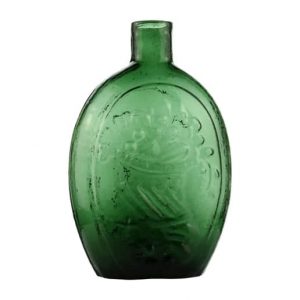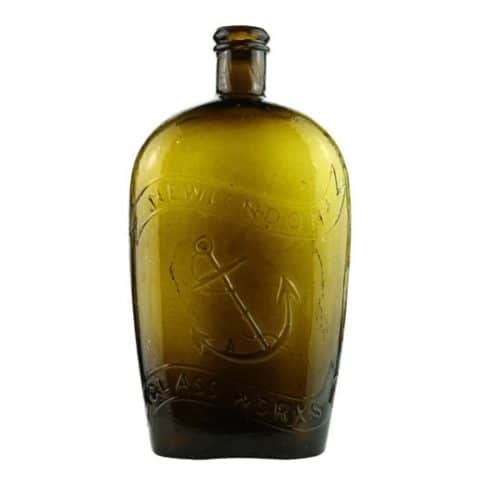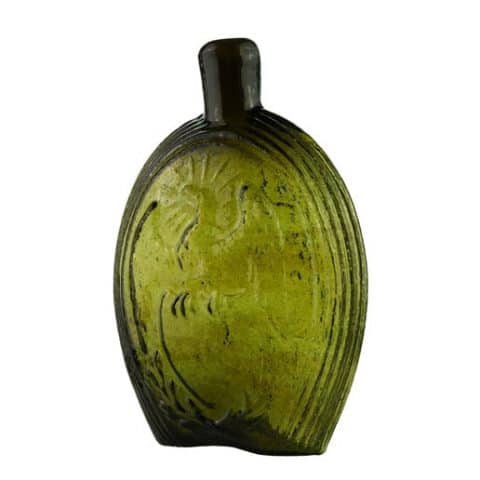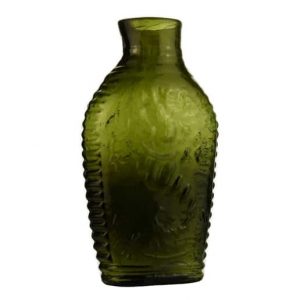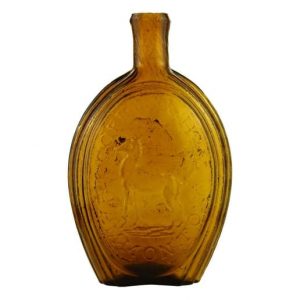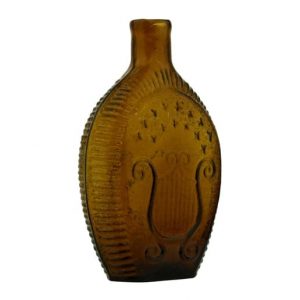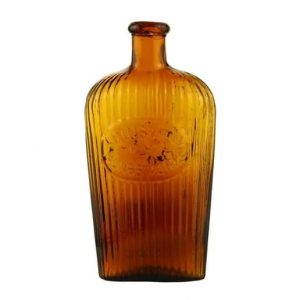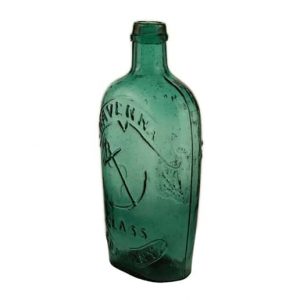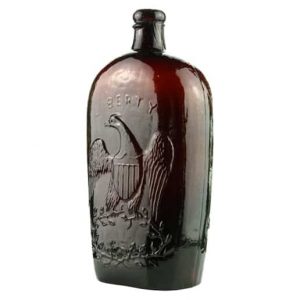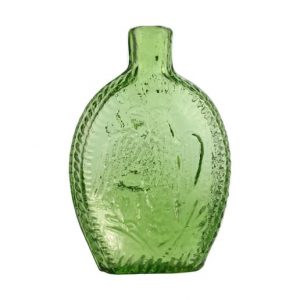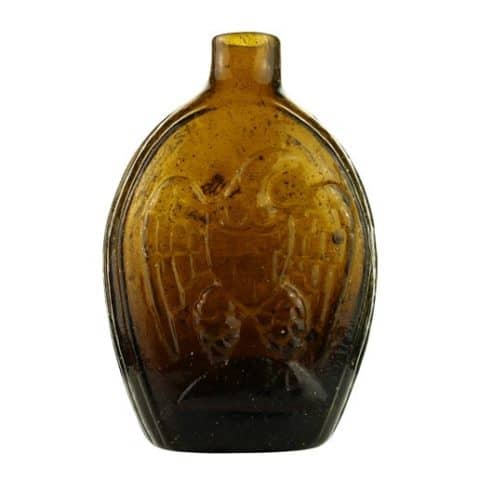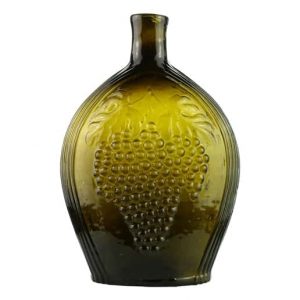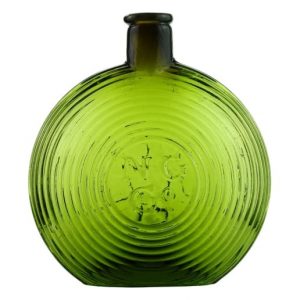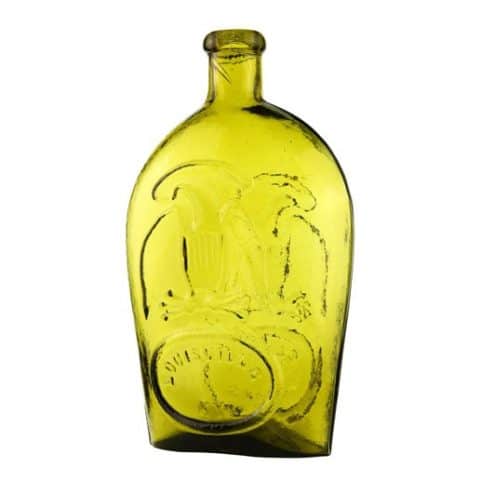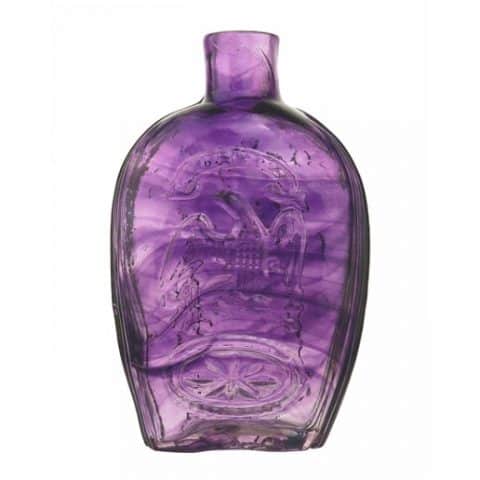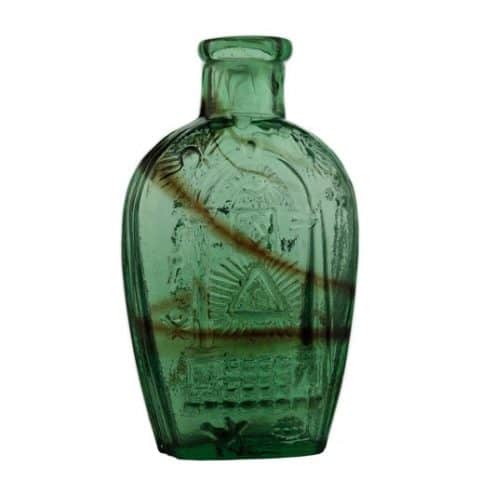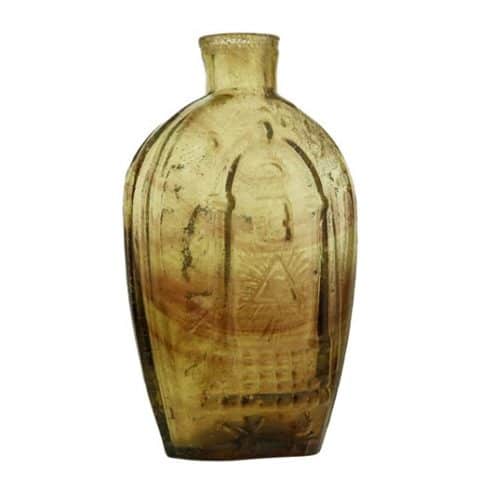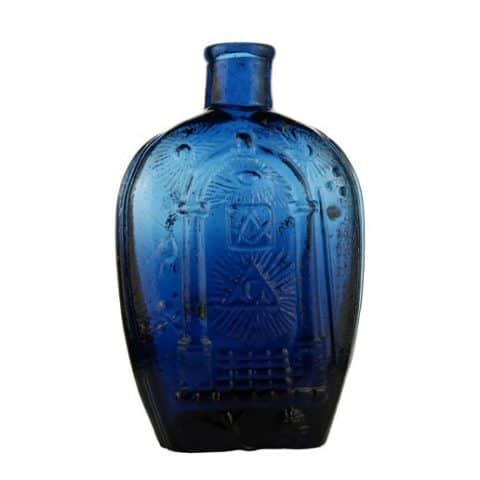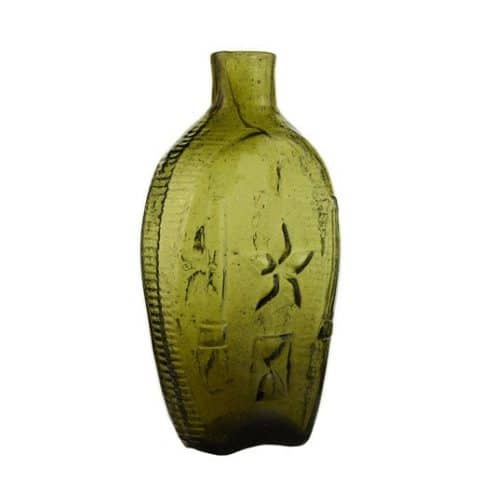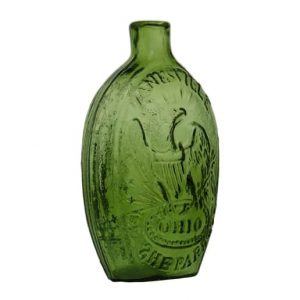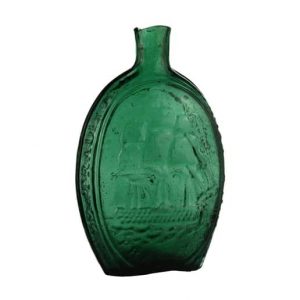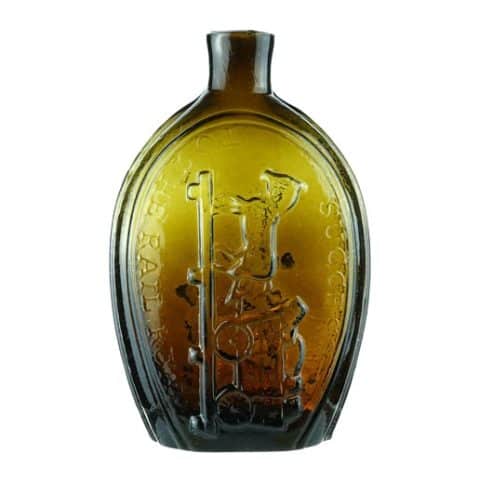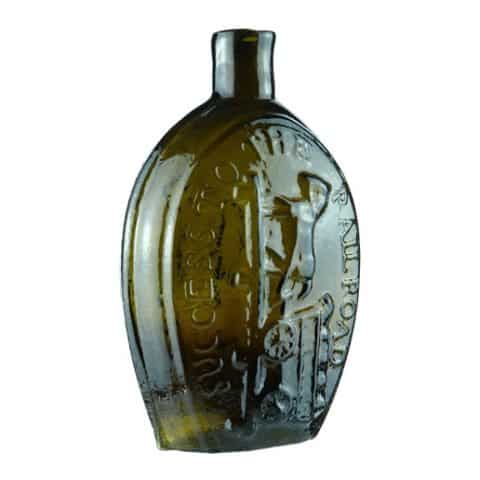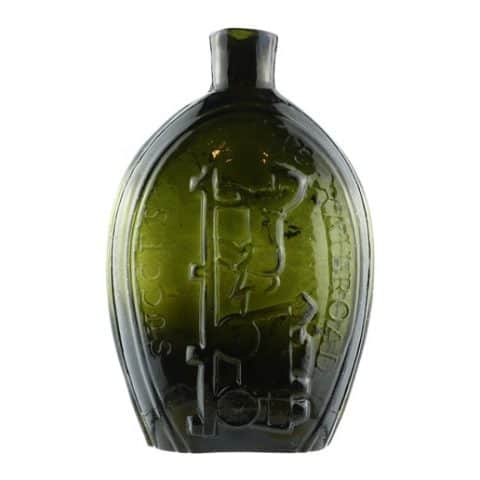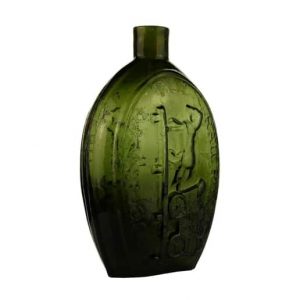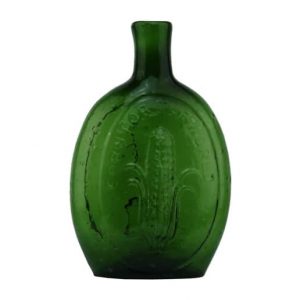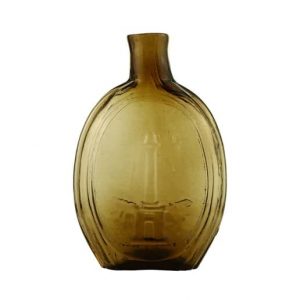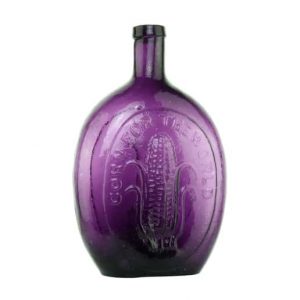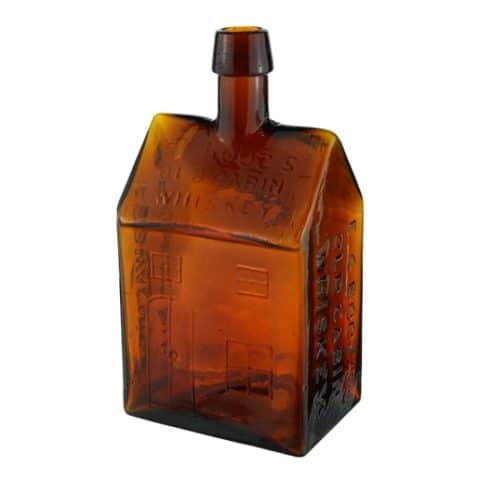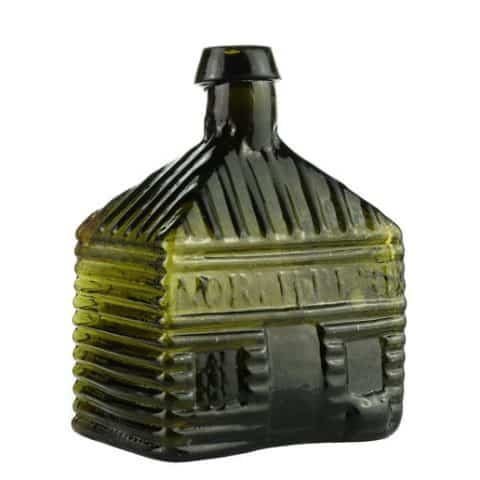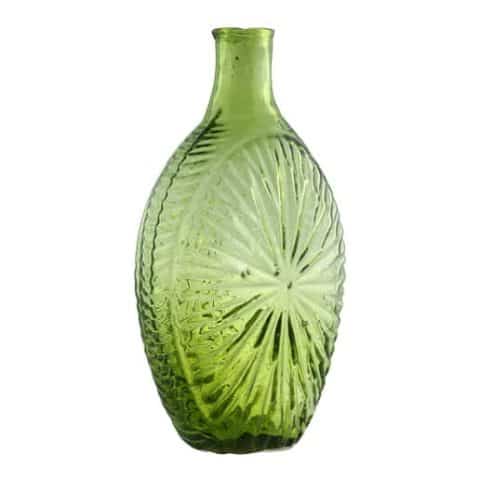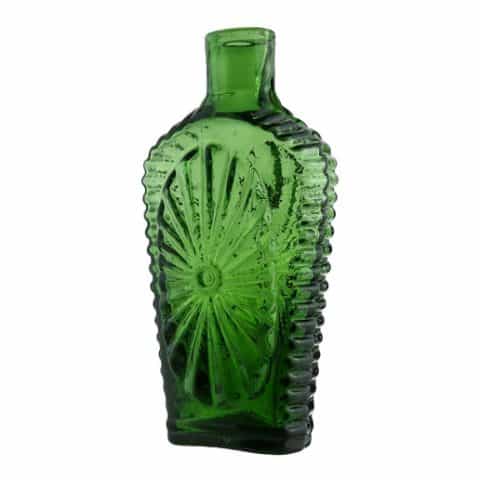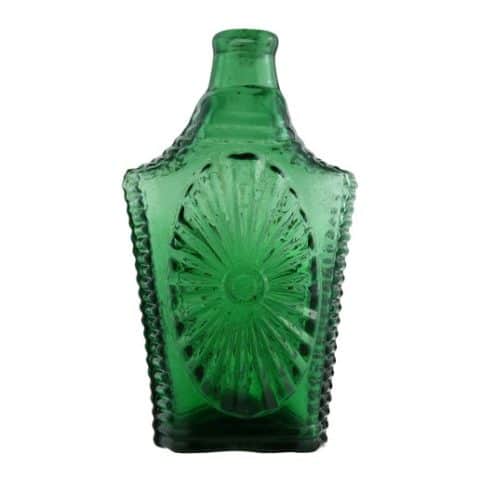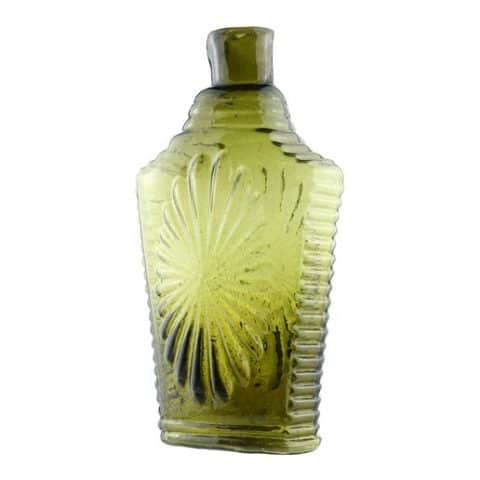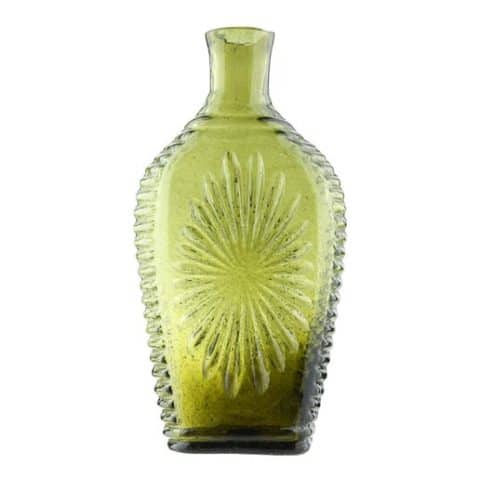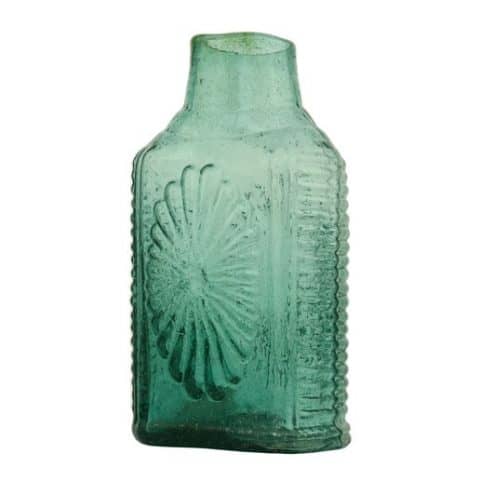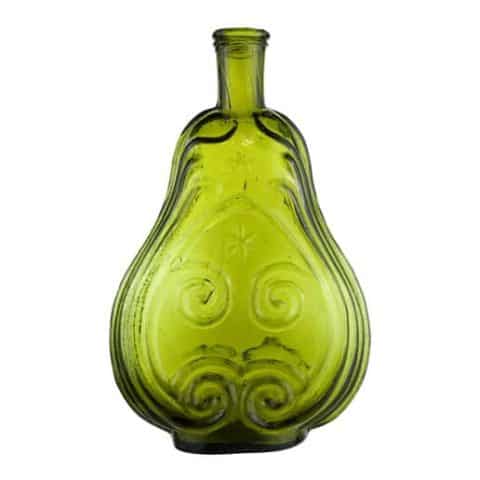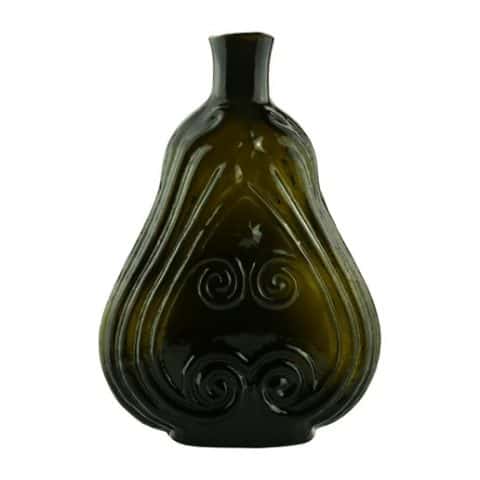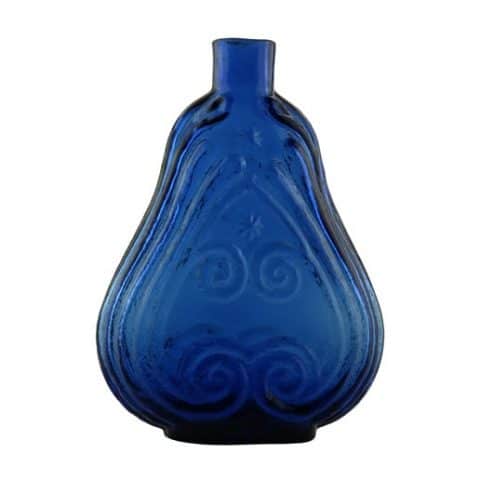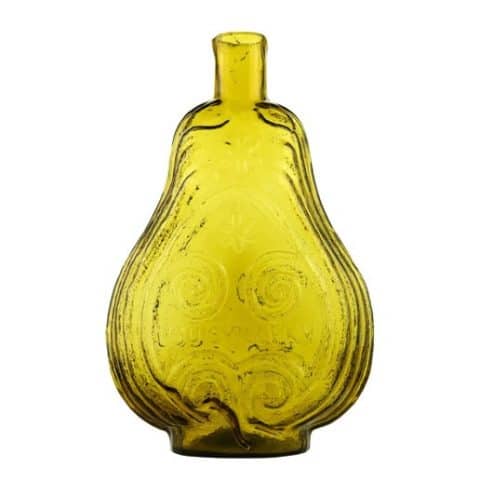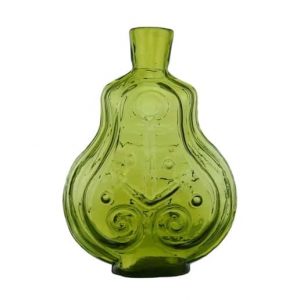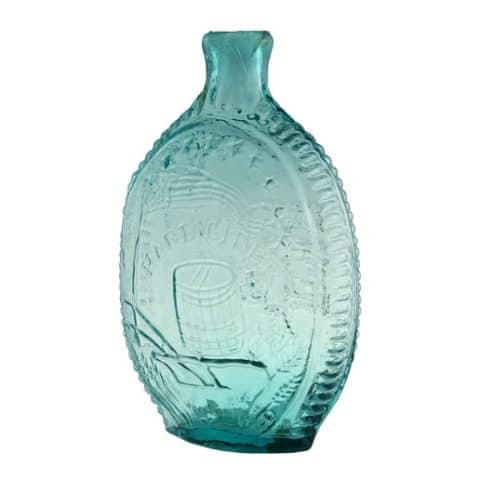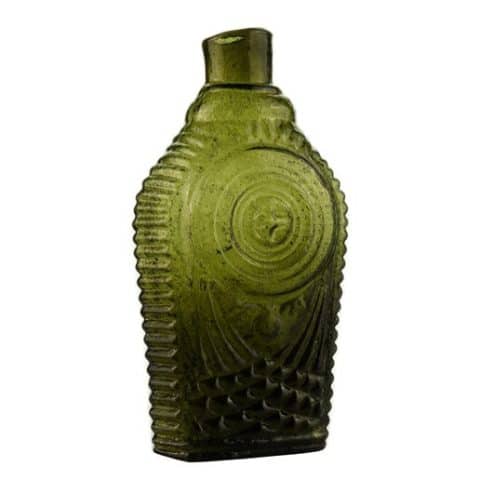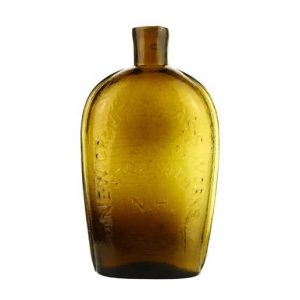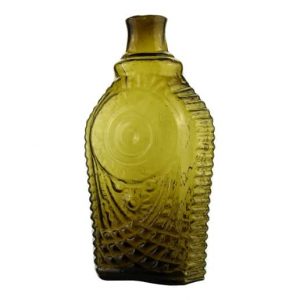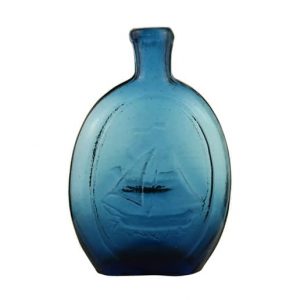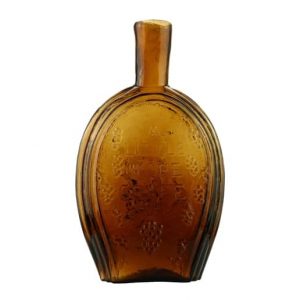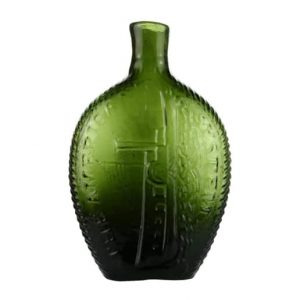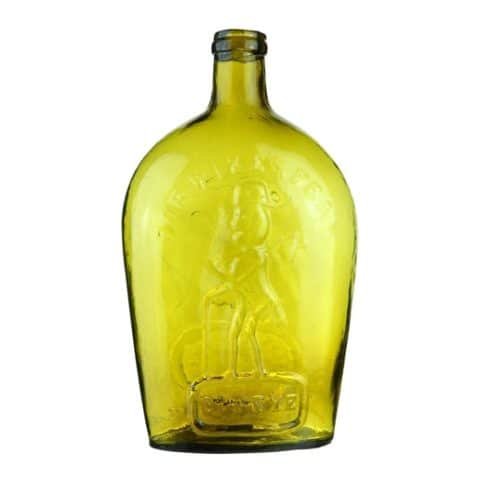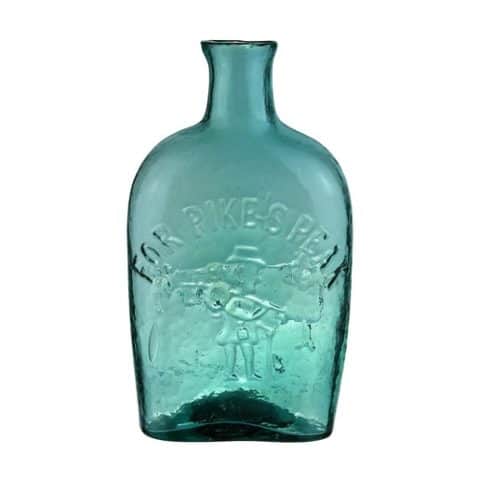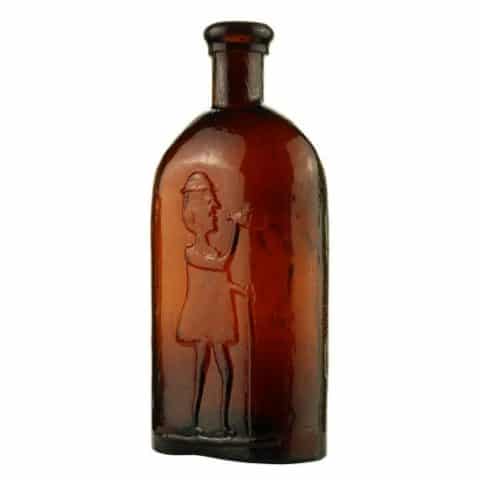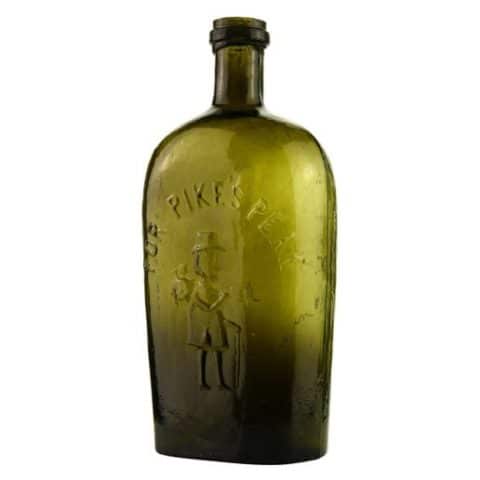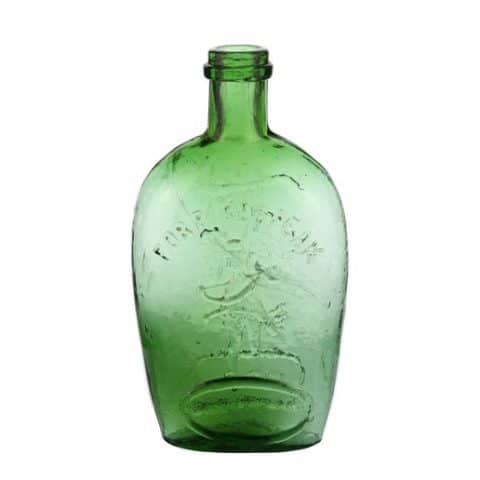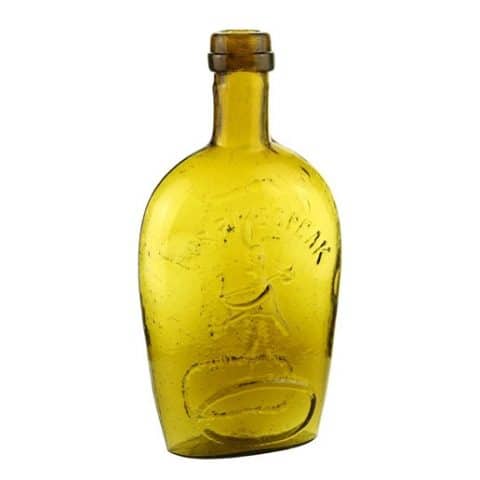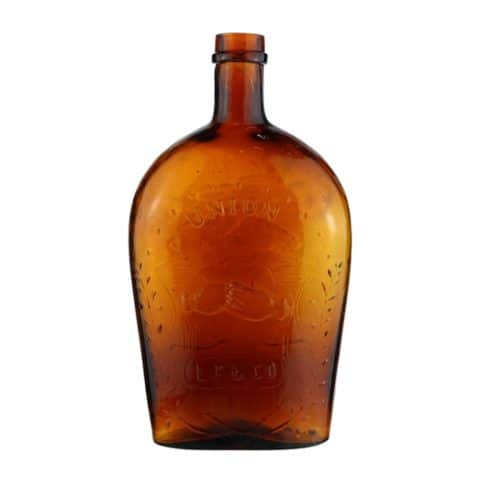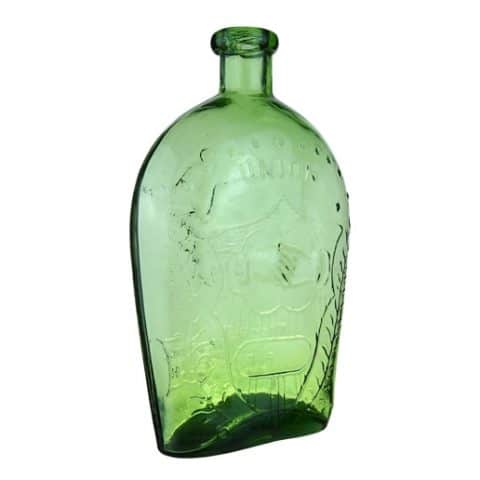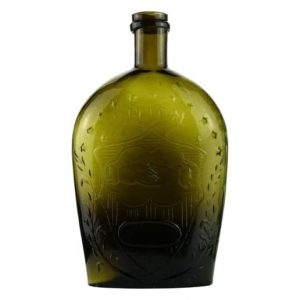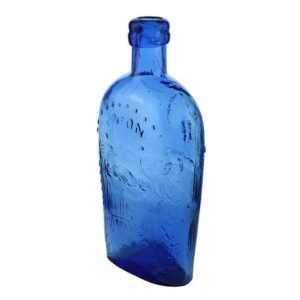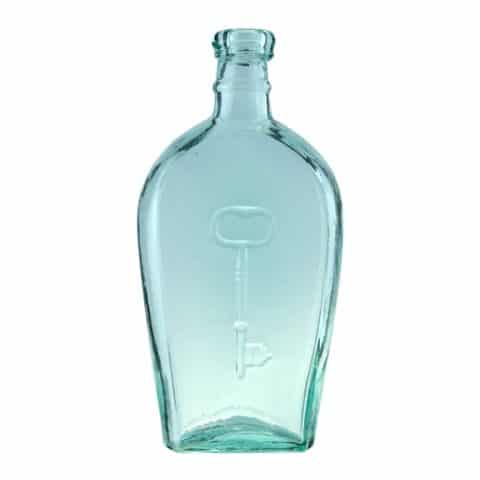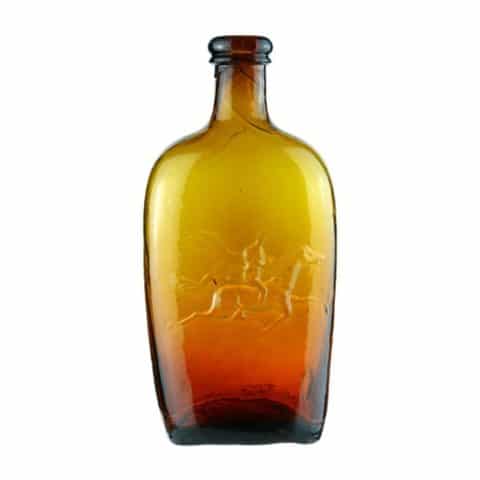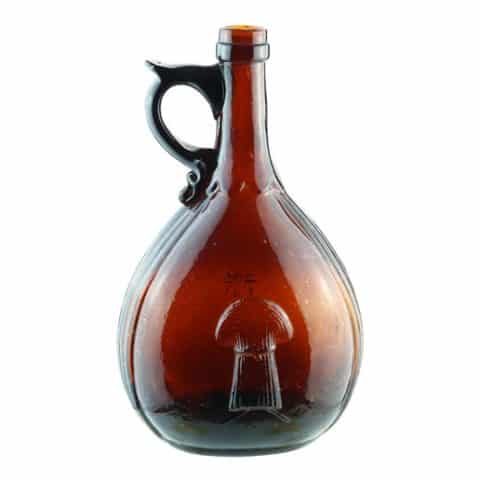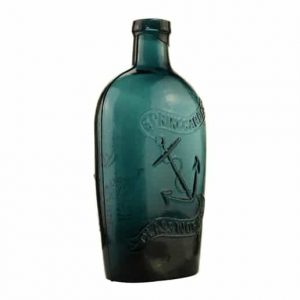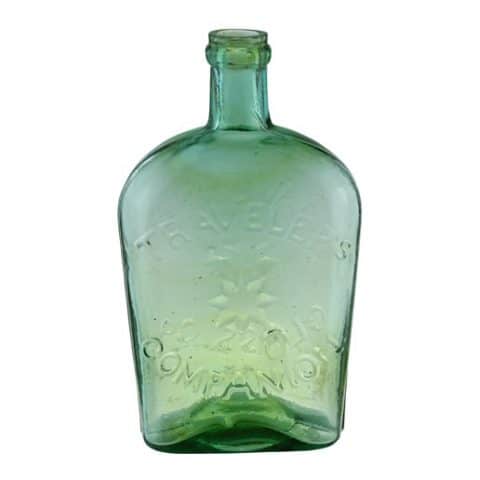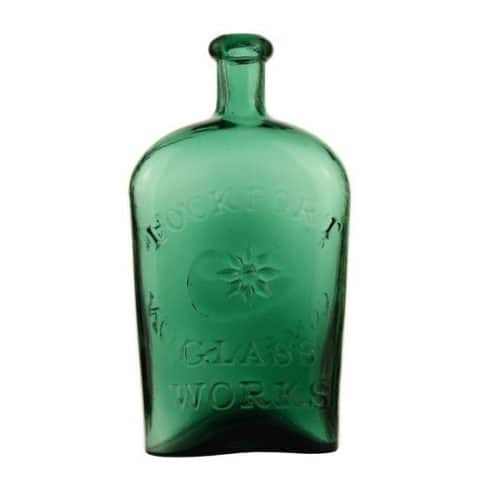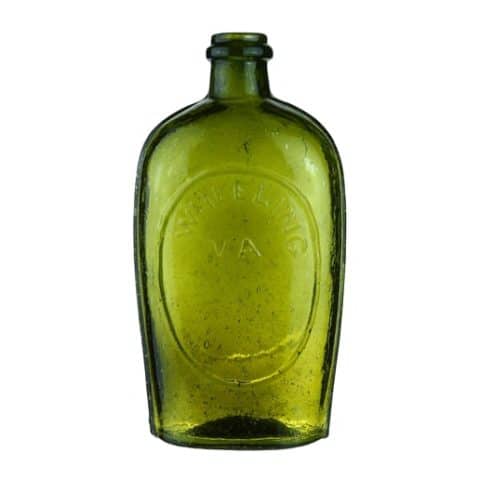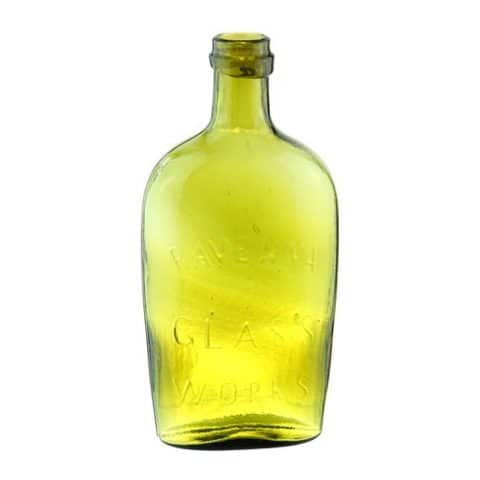GII-37
Eagle “Ravenna Glass Company” and Anchor
GII – 37
Eagle “Ravenna Glass Company” and Anchor Flask
Ravenna Glass Company, Ravenna, Ohio
Blue-Green Pint
Provenance: Anonymous
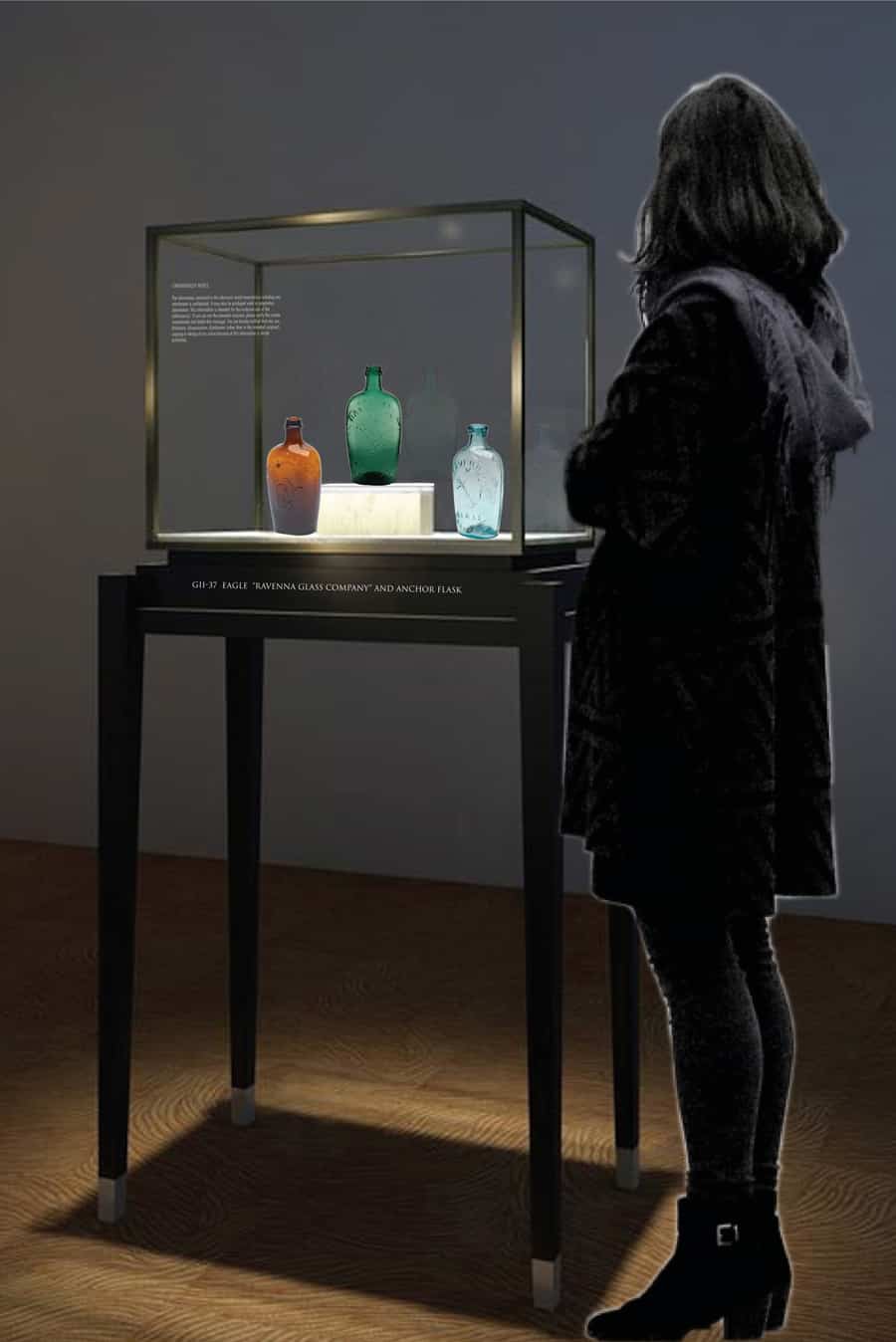
The fouled anchor, besides being a nautical or shipping emblem has long been considered a symbol of hope, strength, and stability during a time of trouble or toil as these flasks were blown in the days leading up to the Civil War. The reverse features an American eagle that stands resolute with 13 stars representing the strength of the states.
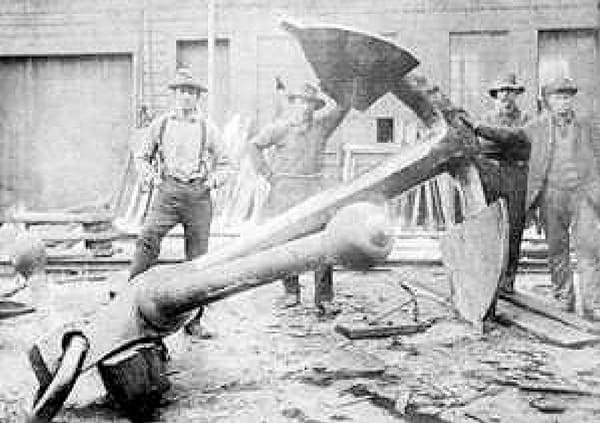
Our museum example of a pint GII-37 Eagle “Ravenna Glass Company” and Anchor flask is a midwestern piece blown in a rather common mold in an uncommon color. The deep blue-green glass is an outstanding color to obtain for this flask making it extremely desirable. The flask was produced at the Ravenna Glass Company in Ravenna, Ohio from around 1857 to 1860.
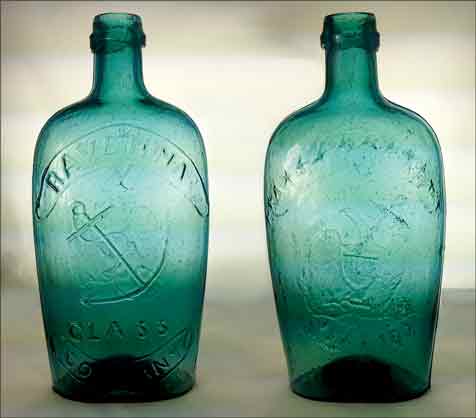
Typically you find the GII-37 Ravenna Eagle-Anchor flask in aqua and dark aqua glass which is considered common. Pale-green glass is comparatively scarce while clear, dark amber, golden-amber, olive-yellow, olive-amber (black), light olive green, dark olive green, and ice blue are considered scarce; and clear green, emerald green, and dark blue-green glass examples are rare.
See a second museum example of a GII-37 Ravenna Eagle-Anchor flask in an almost identical color from the Fifer collection.
Helen McKearin and Kenneth M. Wilson recount an apocryphal story in their book American Bottles and Flasks and Their Ancestry about how Seth Day broke a window at his store in Ravenna, Ohio in 1851 and was eventually led into the glass business because of the difficulty in finding replacement glass.
Whether this is true or not, Seth Day and his wife, Mary, Ebenezer, and Frances F. Spaulding, and Samuel H. and Helen F. Terry, under the banner of the Ravenna Glass Company, purchased three parcels of land in Ravenna, Ohio in August and September of 1857 and transferred the titles to the Ravenna Glass Co. The deed for the first lot included the initial words, “Being on which the Glass factory is building…”
Seth Day apparently converted his store into sales for the fledgling glassworks. On May 7, 1857, the Portage Sentinel (Ravenna, Ohio) posted the notice that the Ravena Glass Works offered a variety of goods for sale, including “dry goods, groceries, hardware, boots and shoes, hats and caps, carpets, etc.” The notice added, “Most kinds of produce are taken in exchange for goods at the highest market prices.” The address was the “Stone Building, Main Street.”
An advertisement in the October 31, 1857, issue of the Cleveland Leader (Cleveland, Ohio) called the firm “Manufacturers of All Kinds of Green Glass Ware,” featuring especially druggist’s ware, although they also offered vials, in every variety, castor oil, packing, flasks, and globe bottles, cap jars, demijohns, porter, mineral water and wine bottles, inkstands, ink bottles, glass milk pans and more.
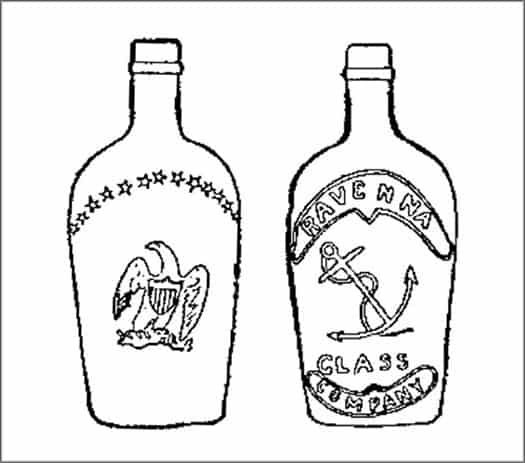
The pint flask features an embossed eagle with the head turned to the left while it leans to the right. A centered breast shield on the eagle has six vertical bars. Three arrows or thunderbolts are in the right talon and an olive branch is in the left eagle talon. There are thirteen embossed medium-sized, five-point stars that arch above the eagle.
The reverse of the flask has ‘RAVENNA’ embossed in a curved frame above an embossed anchor. Below the anchor, the word ‘GLASS’ is embossed in a straight line. Below this is the word ‘COMPANY’ within a curved frame that is concave and pulled upward.
Three different lip treatments are known. This includes a plain lip, plain lip with laid on the ring, and rounded double collar lip. Our museum example has a crude plain lip with a laid-on ring.
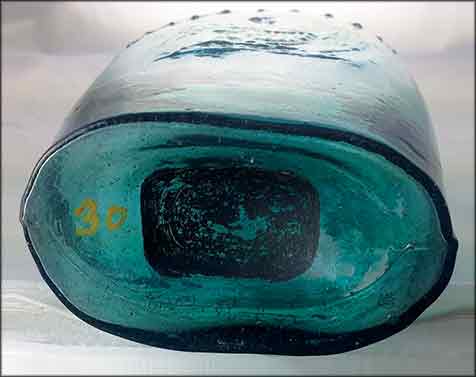
There is a “classic” rectangular iron pontil mark found on many of the Ravenna flasks including our museum example. This flask may also have a smooth base or a smooth base with a disk.
See the museum example of a GXIII-83 Star – Ravenna Glass Works” Flask
See the museum example GXV-17 “Ravenna Glass Works” plain lettered flask
Primary Image: Both GII-37 Ravenna Eagle-Anchor flasks imaged on location by the FOHBC Virtual Museum midwest studio led by Alan DeMaison.
Support: Reference to American Bottles and Flasks and Their Ancestry by Helen McKearin and Kenneth M. Wilson, Crown Publishers Inc., New York, 1978.
Support: Reference to Ravenna Glass Co. by Bill Lockhart, Beau Schriever, Bill Lindsey, and Carol Serr.
Support: Reference to Prized Midwestern Flasks by Mark Vuono, FOHBC 2018 Cleveland National Antique Bottle Show Souvenir Program and use of images from the same.
Support Images: Auction Lot 45: Eagle – Anchor and “Ravenna / Glass / Company” Historical Flask, Ravenna Glass Works, Ravenna, Ohio, 1857-1870. Medium amber, applied mouth with ring – smooth base, pint; (1/8 inch flake and manufacturing roughness on mouth edge, washable content residue). GII-37. Strong mold impression and bright color. – Norman C. Heckler & Company
Support Images: Auction Lot 170: Eagle – Anchor And “Ravenna / Glass / Company” Historical Flask, Ravenna Glass Company, Ravenna, Ohio, 1857-1860. Aquamarine, applied double collared mouth – iron pontil mark, pint. GII-37 Bright with bold embossing. Unusual with the iron pontil scar. Fine condition. – Norman C. Heckler & Company
Support Images: Auction Lot 169: Eagle – Anchor And “Ravenna / Glass / Company” Historical Flask, Ravenna Glass Company, Ravenna, Ohio, 1857-1865. Bright orange amber shading to reddish amber in the base, applied mouth with ring – iron pontil mark, pint; (interior blob of glass has two radiations). GII-37 Beautiful color and whittled surface. Generally fine condition. – Norman C. Heckler & Company
Support Images: Auction Lot 7101: RAVENNA GLASS COMPANY Anchor / Eagle Pint, Aquamarine, Shiny glass with some faint traces of haze, Two tiny pinpoint nicks on the heel. Embossing varies from medium to strong. Base: smooth, McKearin: GII-37 – Greg Spurgeon, North American Glass
Join the FOHBC: The Virtual Museum is a project of the Federation of Historical Bottle Collectors (FOHBC). To become a member.

